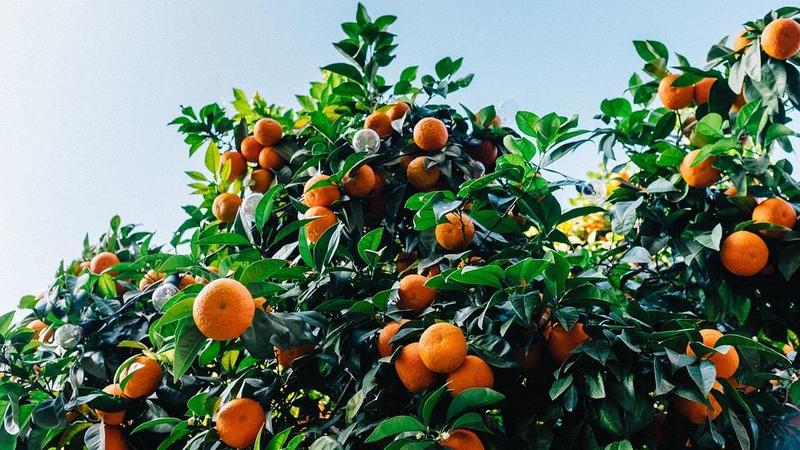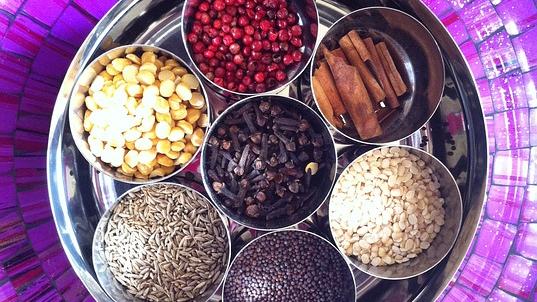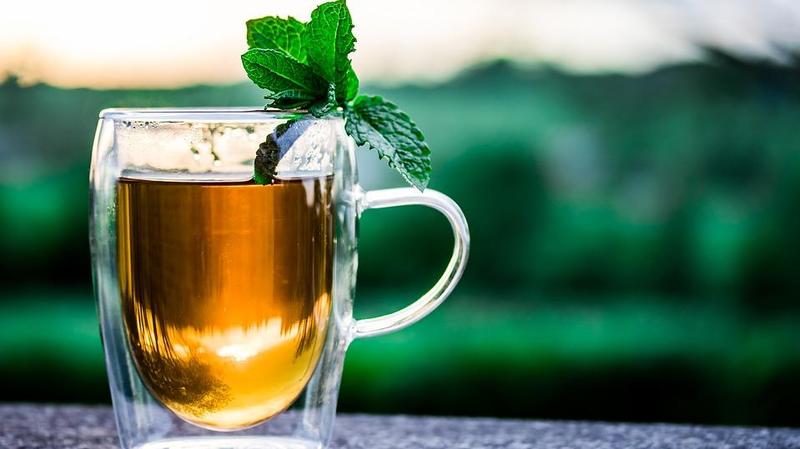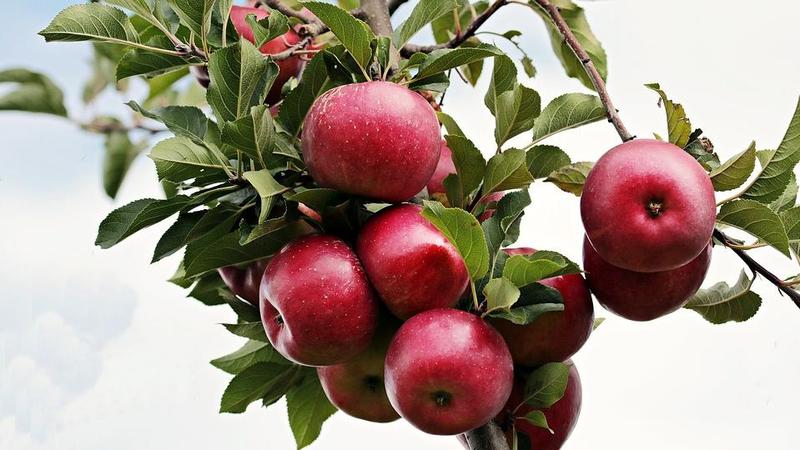Table of contents
Yogic diet
The yogic diet is a vegetarian one; it consists mainly of foods that help to calm your mind and sharpen your intellect. If you want to get the optimum benefit from your yoga practice, eat foods that soothe and nourish your body. A pure diet promotes your physical health and much more. It encourages you to be cheerful, serene and maintain your mental poise throughout the day. When you practice yoga, you are working on yourself on many levels.
Your yoga practice will be greatly enhanced by a simple nutritious vegetarian diet, occasional fasting and abstinence from negative habits such as smoking.
General guideline for eating
- Try to chew each mouthful slowly and thoroughly, remembering that digestion begins in your mouth.
- Pay attention to eating and savour your food. Don’t eat while you are working at your computer, watching television or speaking on the phone.
- Try to cut down on snacking between meals.
- Don’t overload your stomach. The “Hatha Yoga Pradipika”, an important ancient text, suggests that you fill your stomach only half-way with food, one quarter with liquid and leave the rest empty.
- Maintain a peaceful attitude during your meals. Don’t argue over the dinner table.
- Try to have some of your meals in silence.
- If you are planning to change your diet; do it gradually.
- Give thanks before you start to eat.
- Eat to live; don’t live to eat.
The three ‘Gunas’ – the qualities of nature
Yoga philosophy identifies three qualities that are present in varying degrees in everything in the universe, including your physical body, mind and emotions.
“The foods that increase life, purity, strength, health, joy and cheerfulness, which are savoury and smell good, substantial and agreeable, are dear to the sattvic people”.- Bhagavad Gita, chapter 17, verse 8
Sattva is the quality of light, purity and knowledge. Enhance your yoga practice by making your diet as sattvic as possible by eating foods that are pure, wholesome, naturally delicious, without preservatives or artificial flavourings. A sattvic person is characterized by feelings of cheerfulness, peace and contentment.
When you eat sattvic foods, you body tends to be in a healthier state and you mind is less stressed. This diet includes fresh and dried fruits, pure fruit juices, whole grains, legumes, nuts, seeds, wholemeal bread, honey, fresh herbs and herbal teas, fresh vegetables and organic dairy products. A sattvic diet is easily digested and supplies you with the maximum amount of energy. It increases the vitality and endurance of your body. It will give you the strength to overcome fatigue, even when you need to do strenuous work.
If you are what you eat, your food preferences reflect your level of physical and mental purity. As you progress in your yoga practice, you will probably notice that your diet is changing and your cravings for negative foods lessening.
“The foods that are bitter, sour, salty, excessively hot, pungent, dry and burning are liked by the rajasic and are productive of pain, grief and disease”.- Bhagavad Gita, chapter 17, verse 9
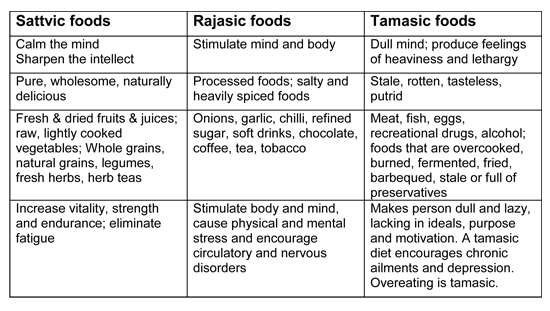
Rajas is the quality of passion, activity and non-stop motion. Rajasic foods cause your mind to be agitated. They over-stimulate your body, contributing to physical and mental stress. If you feel nervous and stressed out, try cutting down on rajasic foods.Rajasic foods include hot spicy foods, onions, garlic, refined sugar, soft drinks, chocolate, processed and refined foods, foods that are full of chemicals and preservatives, coffee and black tea.
Tamas is the quality of ignorance, darkness and inertia. It induces heaviness, lethargy and laziness. Tamasic foods are stale, fermented, burned, barbecued, overcooked or reheated too many times. They include meat, fish, eggs, drugs, alcohol and tobacco. A tamasic diet makes you feel dull, lacking in higher ideals and devoid of motivation. Overeating is tamasic. If you suffer from chronic ailments and depression, try reducing the tamasic foods you eat.
“The foods that are stale, tasteless, putrid, rotten and impure refuse, is the food liked by the tamasic people”.- Bhagavad Gita, chapter 17, verse 10
Fasting
Fasting, voluntarily refraining from eating, can enhance the benefits of your yoga practice in many ways. It enables you to take advantage of nature’s great healing powers to restore health and vigour to your body and mind. Fasting gives your digestive system a rest, allowing your body to cleanse itself thoroughly. It removes waste matter, impurities that your body may have accumulated over many years.
Some reasons to fast
- When you fast, you don’t have to spend time and energy to prepare and eat food. You are more free to focus on aspects of your yoga practice, such as pranayama, asanas and meditation
- All spiritual traditions recommend fasting, often as a means of strengthening meditation
- Even a one day fast leaves your mind and body feeling lighter
- Fasting is a way to make your mind stronger and increase your will-power. Just as you strengthen your muscles by giving them work to do, you can also strengthen your mind by asking it to do something that is a bit difficult – like not eating
- Fasting can assist you in developing concentration and mental strength
- Fasting enables you to more easily absorb higher energy vibrations and be more fully conscious.
- Your whole system is cleansed and given an overhaul. During a fast, all of your energy that normally goes towards digesting your food is available for the repair and healing of your body.
When to fast
Pick a time when you don’t have to work, when you can be as quiet as possible, perhaps on the weekend.
Try fasting one day a week to maintain your good health and mental resolve. After a one day fast your can return to a normal diet the next day.
Two to three day fasts are recommended several times a year, especially at the change of seasons. Fasting gives your body a spring cleaning.
Longer fasts of a week or more can give you great spiritual strength. After the third day, your hunger will disappear. If you would like to try a longer fast, it is advisable to have expert guidance.
How to fast
Fasting means abstinence from food, both liquid and solid. Water is not a food; it does not stimulate your appetite and does not need to be digested. Drink plenty of water while you are fasting; it helps to cleanse your system.
Many people prefer a juice fast, but be aware that juice stimulates your digestion and you may actually feel more hungry. But it also stimulates the cleansing, so you may find a juice fast more beneficial. Try to take only fresh juices – either fruits or vegetables. Dilute the juice with water. Do not eat solid food or fleshy fruits, such as bananas.
- While fasting, do not think about food and don’t talk about diets. Use your time for quiet activity. Rest as much as possible. Try to have your focus inward.
- If possible, be alone or with other people who are also fasting.
- Drink as much pure water as possible to flush out your system.
- Practice yoga asanas and pranayama while fasting; this enables you to eliminate toxins more quickly.
- Keep your body warm. Bathe frequently to relax your muscles and to assist the cleansing process.
- If you experience a headache or nausea, drink hot water with a little lemon juice.
- Avoid tea and coffee. Herbal teas, especially peppermint, are helpful.
DO NOT: attempt to fast if you are pregnant, if you have had an eating disorder, or if you suffer from anaemia. It is a good idea to consult your doctor or health care professional if you have any doubts.
Breaking your fast
How you break your fast is perhaps the most important part of your fast. Although you may develop food cravings, be careful to resist impulses to indulge. Instead, return to eating slowly. Avoid heavy foods, such as proteins and carbohydrates, immediately after fasting.
On the first day, eat only raw or stewed fruits. They digest easily and help to gently restart the peristaltic action in your digestive system.
Day 2: eat one meal that consists of a raw vegetable salad. This will act as a broom to help eliminate toxins that may have accumulated in your intestines.
Day 3: in addition to the fruits, raw vegetables, include lightly steamed vegetables in your diet on the third day. Do not add salt or other seasonings to your food; enjoy their natural flavours.
Day 4: add grains. Now that you have returned to a balanced diet, try to refrain from (or at least limit) unhealthy items such as sweets, coffee, tea, alcohol, and meat.
Your attitude towards diet and the food that you feed yourself have strong influences on you physically as well as emotionally, psychologically and spiritually. Healthy eating gives rise to peaceful thoughts. Your actions reflect these qualities.
Recipes
Chai

Ingredients (per cup)
- Small piece of fresh ginger, washed and peeled
- 100 ml water
- 100 ml milk – instead of cow’s milk, you can use soy, almond or coconut milk
- 1-2 tsp coconut sugar – or organic jaggery
- 1 tsp loose tea – instead of black tea, you can use roobos or tulsi
- 3 cm cinnamon stick, broken
- Pinch nutmeg
- 1 pod green cardamom
Method
- Grate or chop the ginger. Place it into a small pot, along with the water, milk, sugar, tea, cinnamon and nutmeg. Remove and crush the seeds from the cardamom pod – add them to the mixture as well.
- Place the pot on a medium heat. As the mixture boils; remove it from the heat and stir. Place it back on the heat and repeat this boiling and stirring 3 times.
- Remove the pot from the heat, cover and allow the mixture to stand for 3-5 minutes.
- Strain the tea into a cup – and enjoy!
Variation: if you like your tea more or less milkey, you can adjust the proportion of water and milk.
Note: tea-spice mixture is re-usable, however, you may want to add a bit more tea in subsequent usages.
Learn more about diet in one of our seminars
Conditions of participation
Yoga Vidya is a non-profit association and Europe's leading provider of education and training in yoga, meditation, Ayurveda, massage, holistic health and spirituality.


